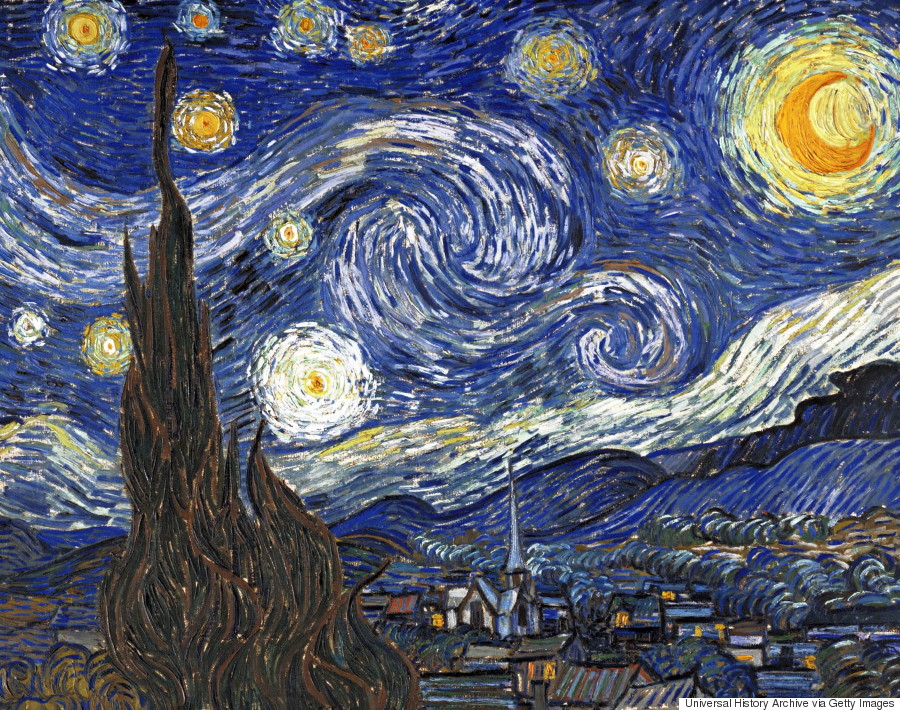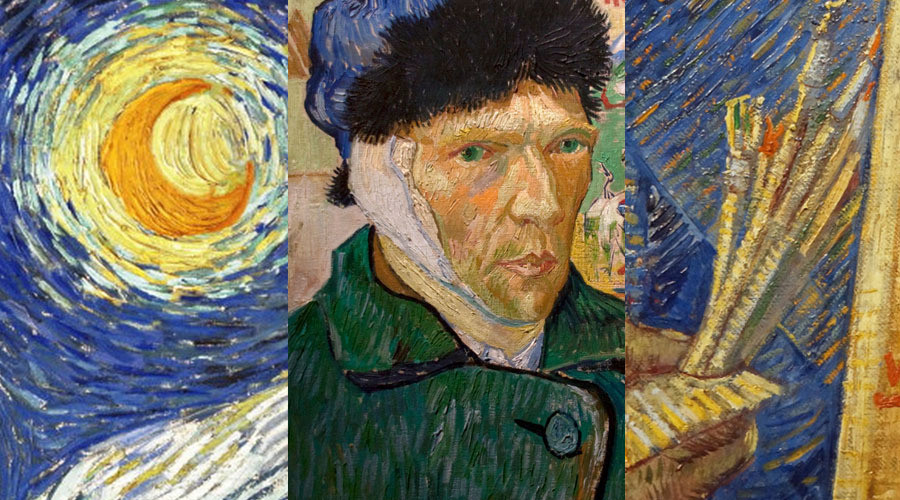
Today is the birthday of one of the art world's most beloved outsiders, the iconic post-Impressionist whose melancholic spirit and rapturous paintings forever colored our notion of the "tortured artist." Yes, we're talking about Vincent van Gogh, a man whose life is as widely renowned as it is shrouded in mystery.
Was van Gogh really as unstable as he seemed? Are his paintings actually changing over time? And what's with the ear already? Today, on what would have been his 162nd birthday, we're exploring some of the theories and discoveries that continue to make van Gogh not only one of the most talented but one of the most beguiling artists of all time.
1. He may have hidden "The Last Supper" in one of his paintings.
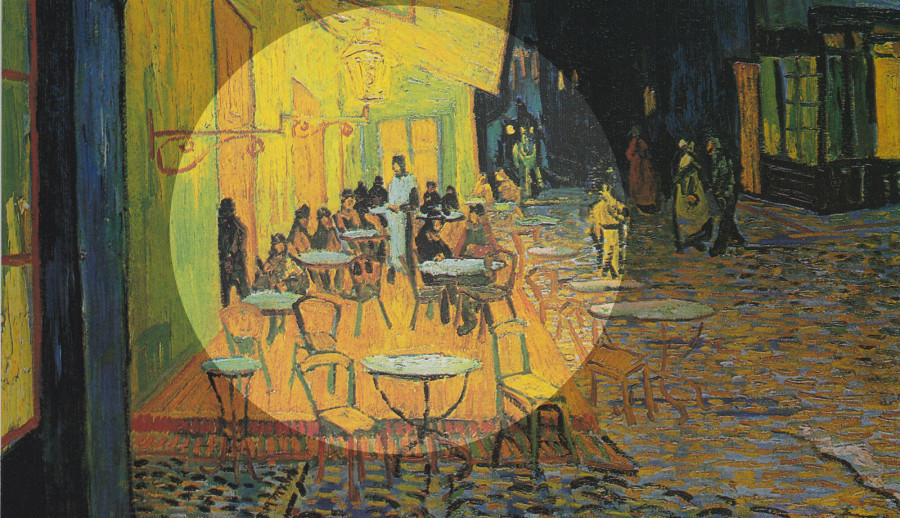
On the surface, van Gogh's "Cafe Terrace at Night" seems to depict a group of nondescript patrons socializing at a cafe. However, according to researchers like Jared Baxter, the moonlit scene may actually be a work of religious symbolism, a subtle nod to Leonardo da Vinci's "The Last Supper." Because of veiled details like crosses distributed throughout the work, many suspect van Gogh's painted rendezvous may be more complicated than it first appears.
2. His work may have accurately rendered one of the most complex scientific principles in history.
"When I meet God, I am going to ask him two questions: Why relativity? And why turbulence? I really believe he will have an answer for the first," the 20th century German theoretical physicist Werner Heisenberg famously said. Turbulence, for the not-so-scientifically literate, is a wildly complex theory that still has many scientists baffled. It also happens to be a theory best visualized by swirling patterns reminiscent of van Gogh's painted atmospheres, specifically those in works like "Starry Night." Some theorize that at times of turmoil in his life, such as his stay in a mental asylum, van Gogh somehow tapped into the artistic side of the scientific theory. Watch the video above for more details.
3. His sunflowers were probably mutants.
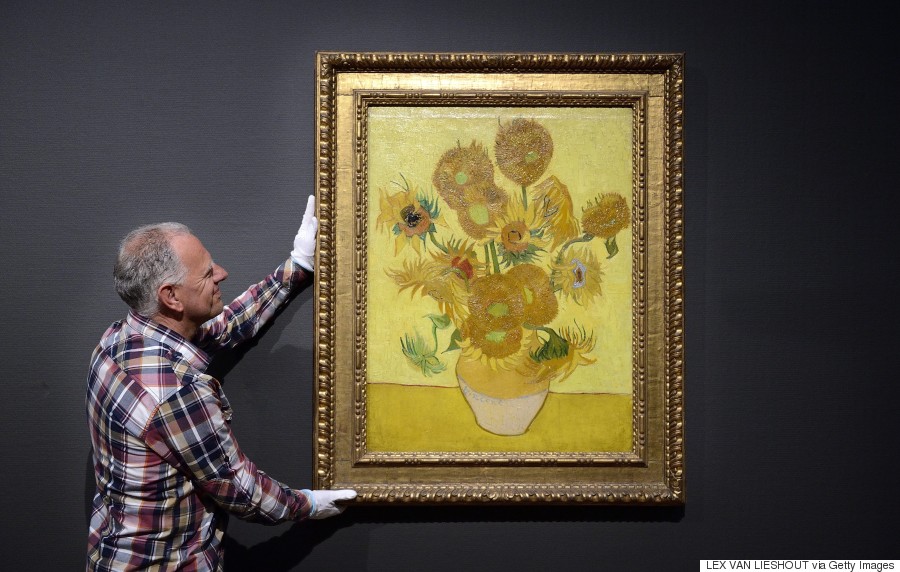
Did you ever notice that van Gogh's iconic sunflowers don't look like the ones you've passed by on road trips? That's because, according to researchers like John Burke of the University of Georgia, van Gogh was not painting your standard sunflower, but rather variants holding a single mutant gene, thus resembling "wooly, chrysanthemum-like" flowers, reminiscent of "fuzzy pom-poms stuck on sunflower stems." Get into the nitty-gritty details of the research here.
4. He may have been colorblind.
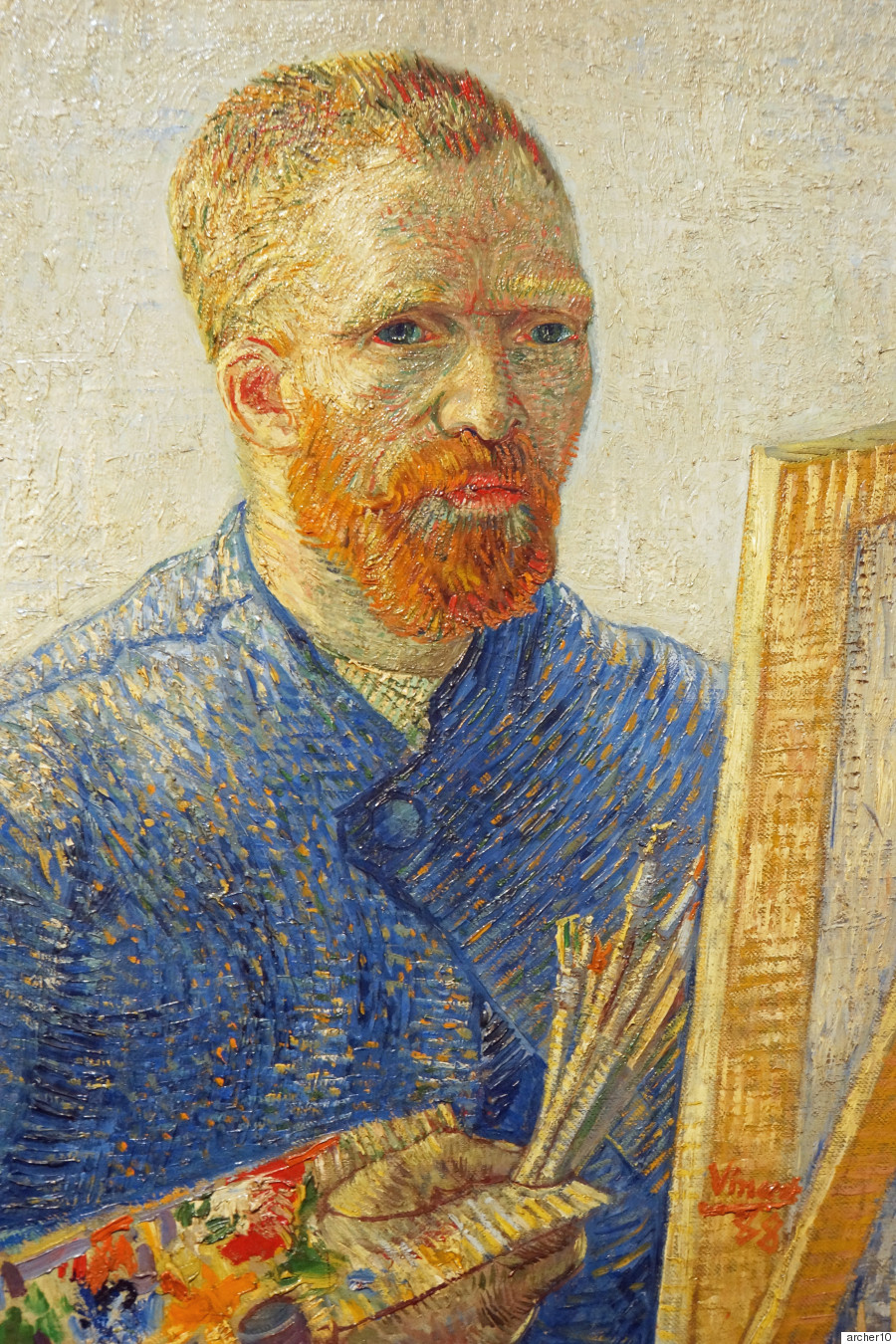
Did van Gogh have trouble perceiving reddish tones? According to Kazunori Asad, a Japanese vision expert, the answer to this question might explain Vincent's cool-heavy color palette and rough style. Asad developed an app titled "Chromatic Vision Simulator," which simulates the experience of particular kinds of color blindness, including van Gogh's possible protanopia. "To me the incongruity of color and roughness of line had quietly disappeared," wrote Asad on his blog. "And each picture had changed into one of brilliance with very delicate lines and shades. This was a truly wonderful experience."
5. He may not have chopped off his own ear.
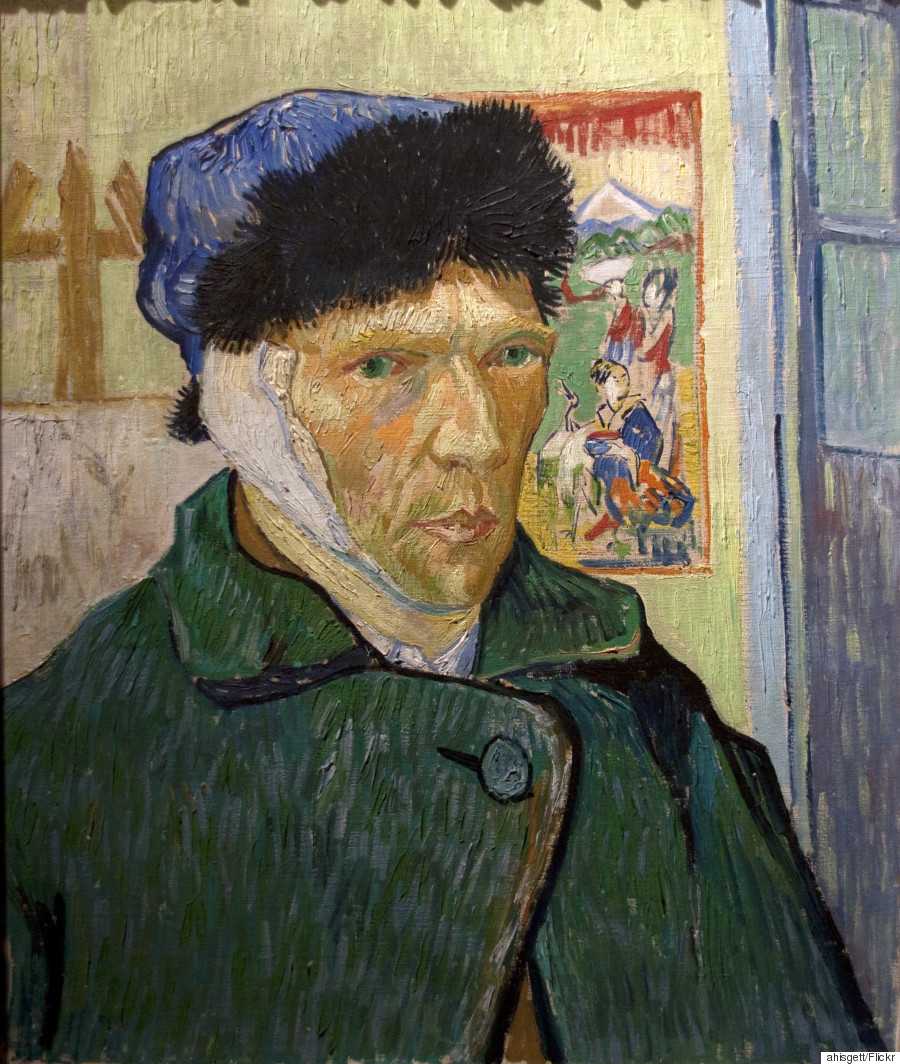
We know, we know. How do we even begin to comprehend a world in which van Gogh that didn't cut off his own ear and deliver it to a lady named Rachel? Well, Hamburg-based historians Hans Kaufmann and Rita Wildegans insist that Vincent van Gogh may have made the whole thing up to protect the real culprit, his friend Paul Gauguin, who could have chopped it off during an argument. (Gauguin liked to fence.) Evidence backing this claim includes a letter van Gogh wrote to Gauguin, which reads: "I will keep quiet about this and so will you."
6. He may not be as manic as the legends assert.
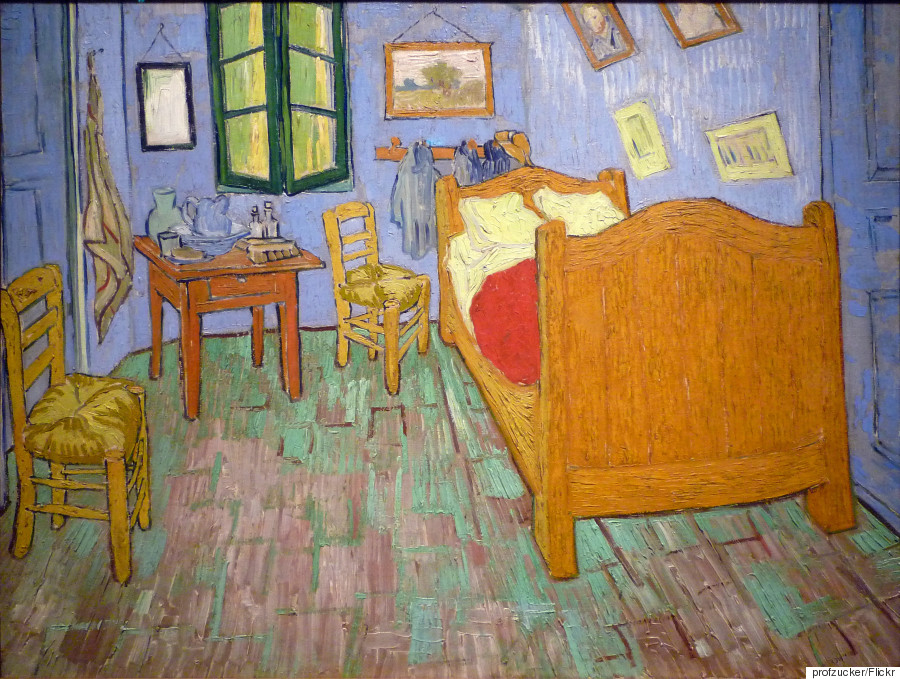
Although his reputation paints him as an impetuous creative, many historians believe van Gogh was more traditional and analytic than he's often thought to be. For example, his iconic "Bedroom" is known now for the jarring contrast between the blue walls and yellow floors, yielding a dizzying and somewhat dark effect. However, researchers discovered the blue paint was originally more of a violet, which was both a traditional foil to yellow and a calmer hue in general.
"You discover more clearly that van Gogh was a very methodical artist, which runs counter to the general myth that he was a manic, possibly slightly deranged man who just spontaneously threw paint at the canvas,” director of the Van Gogh Museum, Axel Rüger said. “He was actually someone who knew very well about the properties of the materials he used, how to use them, and also he created very deliberate compositions. In that sense it’s a major insight in that it gives us a better notion of Van Gogh the artist. He was very goal-oriented."
7. He might have been murdered.

Although the most well-known narrative of Van Gogh's life ends with suicide, soe argue that it was in fact murder that brought about the artist's untimely death at 37 years old. For one, evidence purports that he shot himself in the midsection, and then walked for a mile back to his room afterwards, a rather unlikely scenario. It could be van Gogh's skyrocketing celebrity and persona as a tortured soul that allowed the ruling of suicide to slip by with very little physical support and no indication that van Gogh wanted his life to end. He was finally getting famous, after all. As one unnamed scholar told Vanity Fair: "There are several things that puzzle one if you want to explain suicide… He showed no intention of ‘stepping out.'"
8. His paintings are slowly turning white.
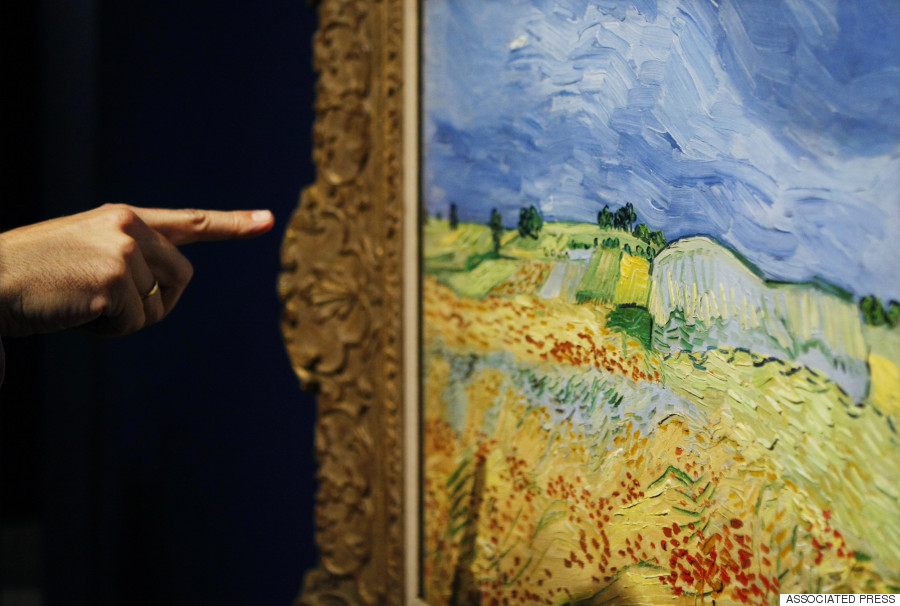
Van Gogh took a particular liking to one of the first synthetically-made paints known to man, manufactured from red lead, or plumbonacrite. Sadly, the material doesn't hold up well, causing bold colors including red to degrade rapidly when exposed to light. As Hyperallergic aptly translated: "The paint particles are now like if you had a Gobstopper with the red core inside and a light blue layer and then gray layer on the outside of the particle mass."
Francesca Casadio, a conservation scientist with the Art Institute of Chicago, explained: "We have known for some time that some of the pigments that van Gogh used alter with time. But honestly I was quite surprised to find that the red lead, the mineral pigment that typically is considered relatively stable, also failed him."
BONUS: His genetic material lives on today... in a creepy ear sculpture.
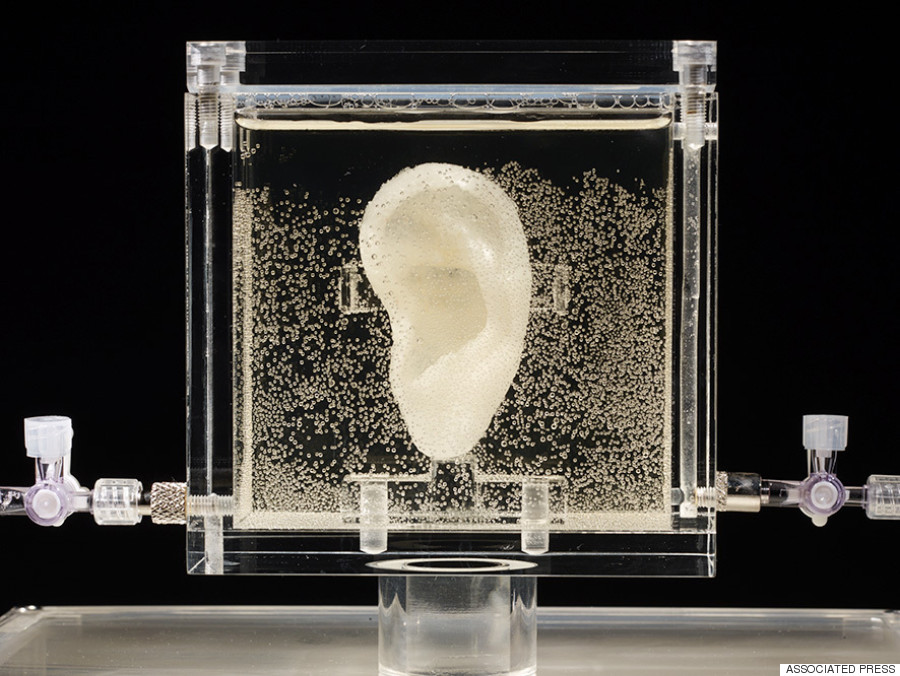
Artist Diemut Strebe created the ultimate work of fan art, an artificially engendered replica of van Gogh's notorious axed left ear, made using his very own DNA. Well, the DNA of the great-great-grandson of the his brother Theo, Lieuwe van Gogh, to be precise. If that doesn't prove our culture's lasting obsession with the cult of van Gogh, we don't know what will. "Just as the fingers and even heads of saints were kept in medieval cathedrals as precious connections with the Christian martyrs," The Guardian's Jonathan Jones wrote of the piece, "so van Gogh's ear is a thrilling relic of the most visionary painter of the modern world."
